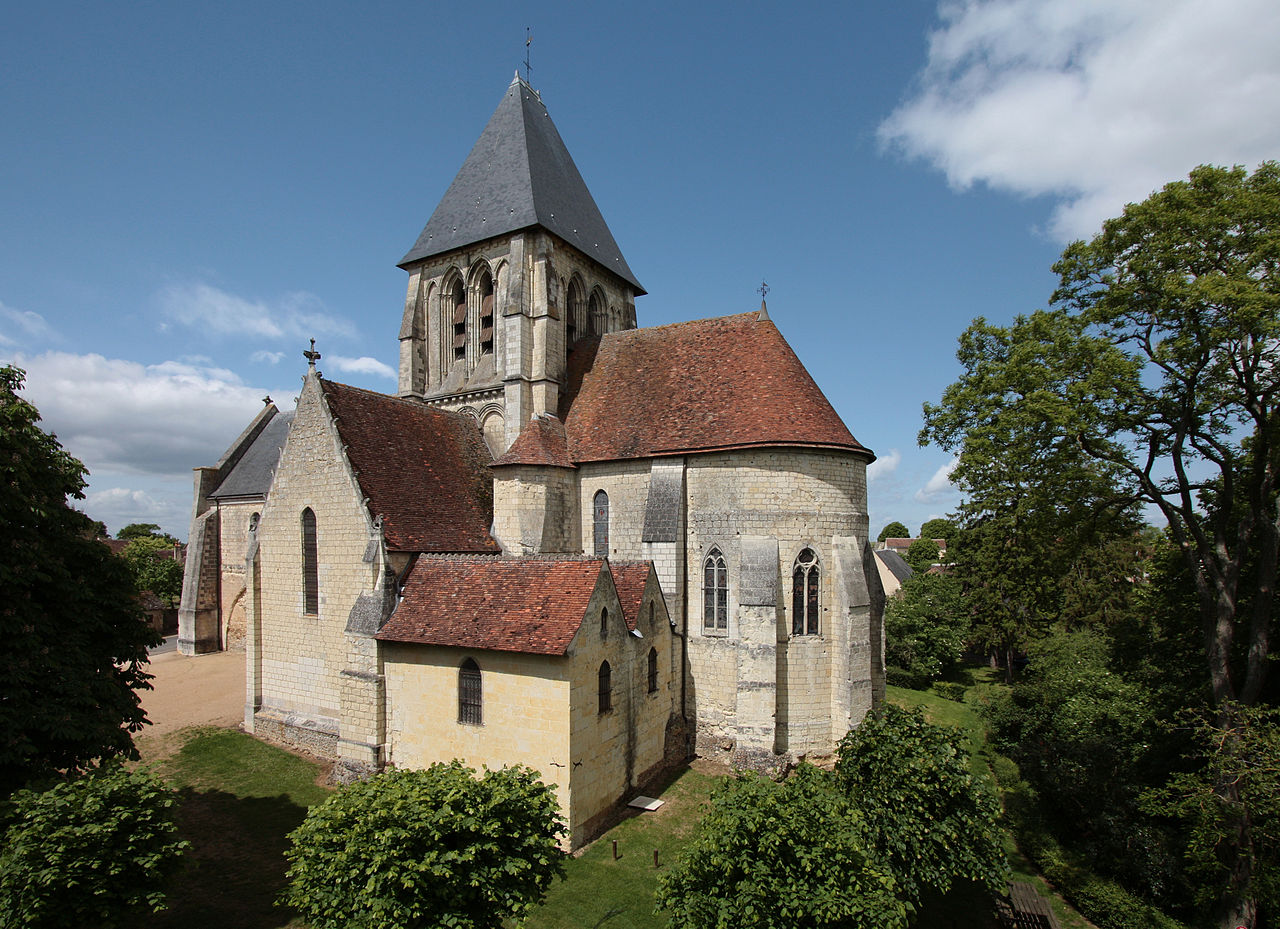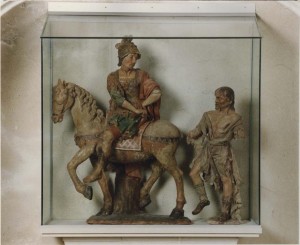La collégiale fut fondée en 1049 par Geoffroy Martel et rebâtie au XIIe dans le style angevin par Geoffrey Plantagenêt, en pierre de taille du sous-sol de Trôo. Remaniée au XIIe, XIVe et XVIe siècles.
C’est un édifice en croix latine avec une tour posée sur le transept. À l’ouest, la porte est garnie de colonnes aux chapiteaux romans.
De l’époque Plantagenêt subsistent une partie des murs de la nef et le croisillon nord.
Au XIIe siècle, une tour terminée par une flèche en pierre, dominait le pays environnant. Détruite à une époque inconnue, elle fit place à une autre construite en charpente, brûlée elle-même par la foudre le 25 mars 1737 comme en témoigne une inscription gravée dans la pierre.
Des stalles en chêne du XVe siècle, surmontées de hautes et fines boiseries, meublent le chœur (XIIIe).
Une charité sculptée de 1640 présente le groupe formé par saint Martin à cheval et le mendiant.
Le groupe sculpté en terre cuite date des années 1640;cette charité est abritée dans la collégiale Saint-Martin de Trôo et semble avoir été créé pour être déposé dans cette église dés l’origine. Il présente les trois protagonistes habituels de la scène: le saint , le cheval et le pauvre; le groupe cheval-cavalier parait assez figé malgré les pattes levées du cheval: le geste du partage est esquissé, l’épée a disparu. le manteau roue est encore entièrement sur le corps du saint représenté en jeune cavalier . Saint Martin accomplit le geste de retournement de son corps pour partager le manteau, geste qui signe sa conversion conformément à la tradition Le mendiant parait beaucoup plus animé, sa jambe levée reproduit le mouvement du cheval et si ses bras ont été amputés, on devine le geste de supplication et de réception du manteau partagé. Ses vêtements déchirés sans couleur insistent sur sa pauvreté laissant apparaître une grande partie de son corps. Le contraste est fort avec la richesse du groupe cheval -cavalier qui met en avant, le tapis de selle, l’harnachement du cheval et le manteau qui entoure encore le saint.
The collegiate church was founded in 1049 by Geoffroy Martel and rebuilt in the 12th century in the Angevin style by Geoffrey Plantagenet, in ashlar from the Trôo subsoil. Altered in the 12th, 14th and 16th centuries.
Latin cross building with a tower on the transept. To the west, the doorway is decorated with columns with Romanesque capitals.
From the Plantagenet period, part of the walls of the nave and the northern cross are still standing.
In the 12th century, a tower with a stone spire dominated the surrounding countryside. Destroyed at an unknown time, it was replaced by another one built of timber, which was itself burnt by lightning on 25 March 1737, as an inscription engraved in the stone testifies.
Oak stalls from the 15th century, topped with high and fine woodwork, furnish the choir (13th century).
A carved charity from 1640 shows the group formed by Saint Martin on horseback and the beggar.
The sculpted terracotta group dates from the 1640s; this charity is housed in the collegiate church of Saint Martin de Trôo and seems to have been created to be placed in this church from the outset. It presents the three usual protagonists of the scene: the saint, the horse and the poor man; the horse-rider group seems rather frozen despite the raised legs of the horse: the gesture of sharing is sketched out, the sword has disappeared. The wheel cloak is still entirely on the body of the saint represented as a young rider. Saint Martin performs the gesture of turning his body to share the cloak, a gesture which signs his conversion in accordance with tradition. The beggar appears much more animated, his raised leg reproduces the movement of the horse and if his arms have been amputated, we can guess the gesture of supplication and of receiving the shared cloak. His torn, colourless clothes emphasise his poverty, revealing a large part of his body. The contrast is strong with the richness of the horse and rider group, which highlights the saddle cloth, the horse’s harness and the cloak that still surrounds the saint.

 "/>
"/>
